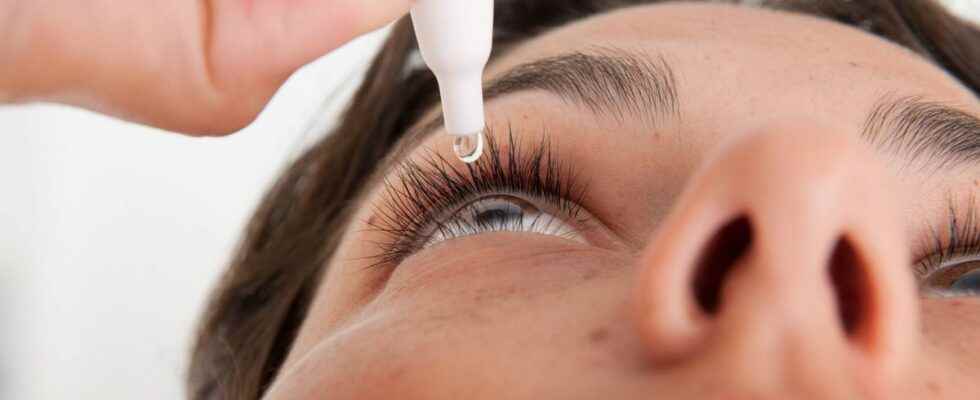Published on
Updated
Reading 1 min.
American researchers have discovered a new way to treat dry eye, a disease characterized by a lack of tears.
Dry eye affects more than one in ten French people. Yet this disease, defined by inadequate tear production, is still poorly treated. Current treatments – hydrating drops – only work in 10 to 15% of patients. Fortunately, a new therapeutic avenue, discovered by researchers at Washington Universitylooks promising.
A new treatment thanks to genes
For this work, the results of which are published in the journal Proceedings of the National Academy of Science, the researchers analyzed the genes expressed by mouse corneal cells. They studied those for dry eye, but also those for diabetes and other disorders.
This is how they discovered that in mice with dry eye, the cornea activated the expression of the SPARC gene.
They also found that higher levels of SPARC proteins – produced by stem cells that regenerate the cornea – were associated with better healing of lesions.
“We performed single-cell RNA sequencing to identify genes important for maintaining corneal health, and we believe that a few of them, in particular SPARC, may provide potential therapeutic targets for the treatment of dry eye and corneal damage“, said Joseph B. Lin, first author of the article and student in Dr. Apte’s laboratory.
These stem cells also play a role in corneal transplants: it is thanks to them that they take, note the researchers.
Stem cells: new therapeutic avenues
Another advantage of these stem cells: they could be used to develop other therapeutic leads, according to scientists.
“If the proteins we have identified do not prove to be effective therapies for activating these cells in people with dry eye syndrome, we may be able to transplant modified limbal stem cells to prevent corneal damage in people with dry eye syndrome. dry eye patients“, they conclude.
